June 2025
Reference
Tinderbox

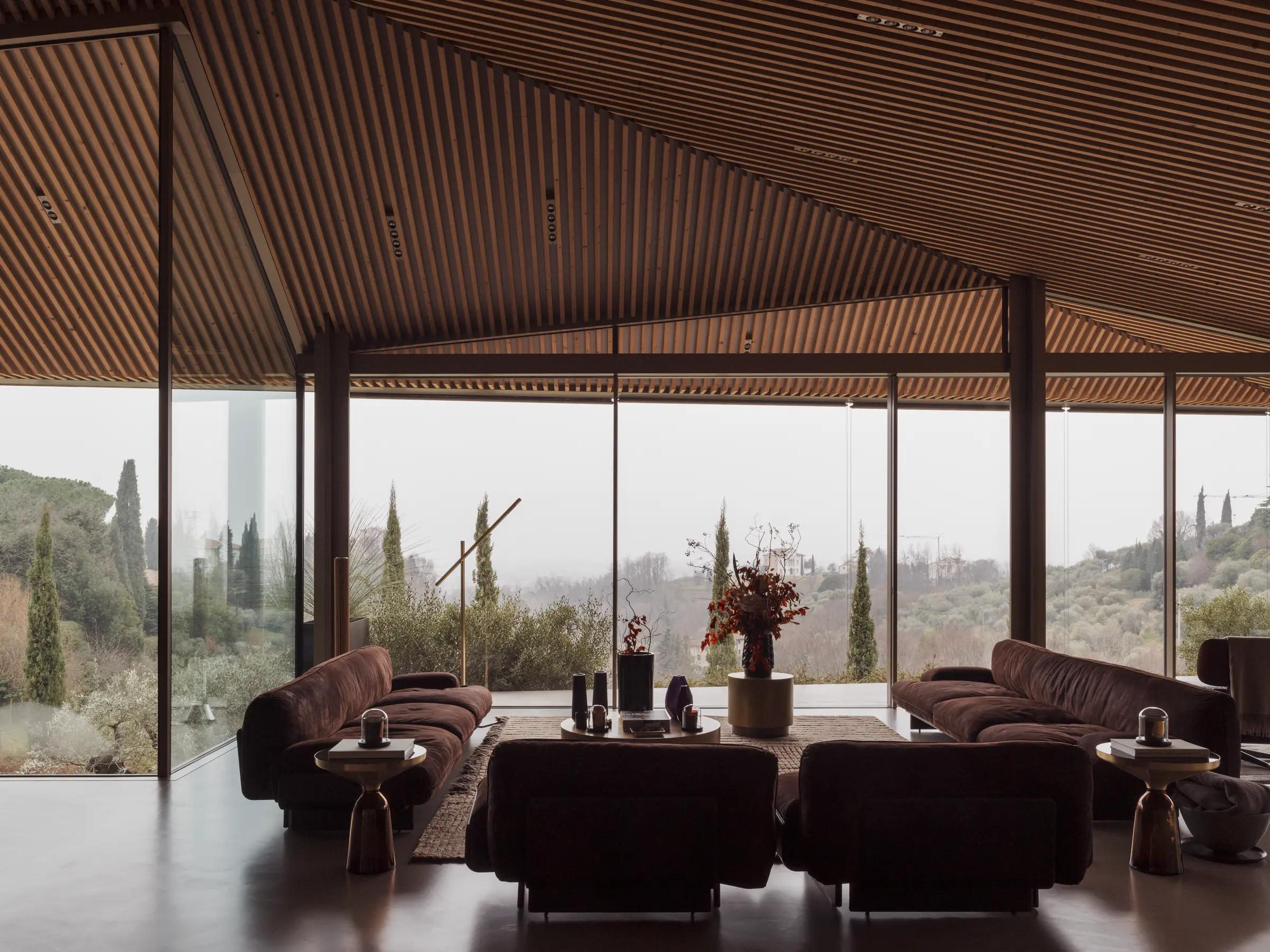
We are in Asolo, one of Italy’s most beautiful villages. Tucked away among the hills, you can find us at the foot of the village’s compact old town. The site of our present-day building was once a rural property of the late 1800s, to which other buildings were attached over time with various modifications until the 1960s. The complex was used for residential and agritourism purposes, connected to the agricultural activities carried out on the property’s land, with a vegetable garden, vineyard and olive trees. The site’s unique, privileged, south-facing position, gently resting against the hillside to give unobstructed views down the valley, saw it become a pleasant spot for rest and relaxation.
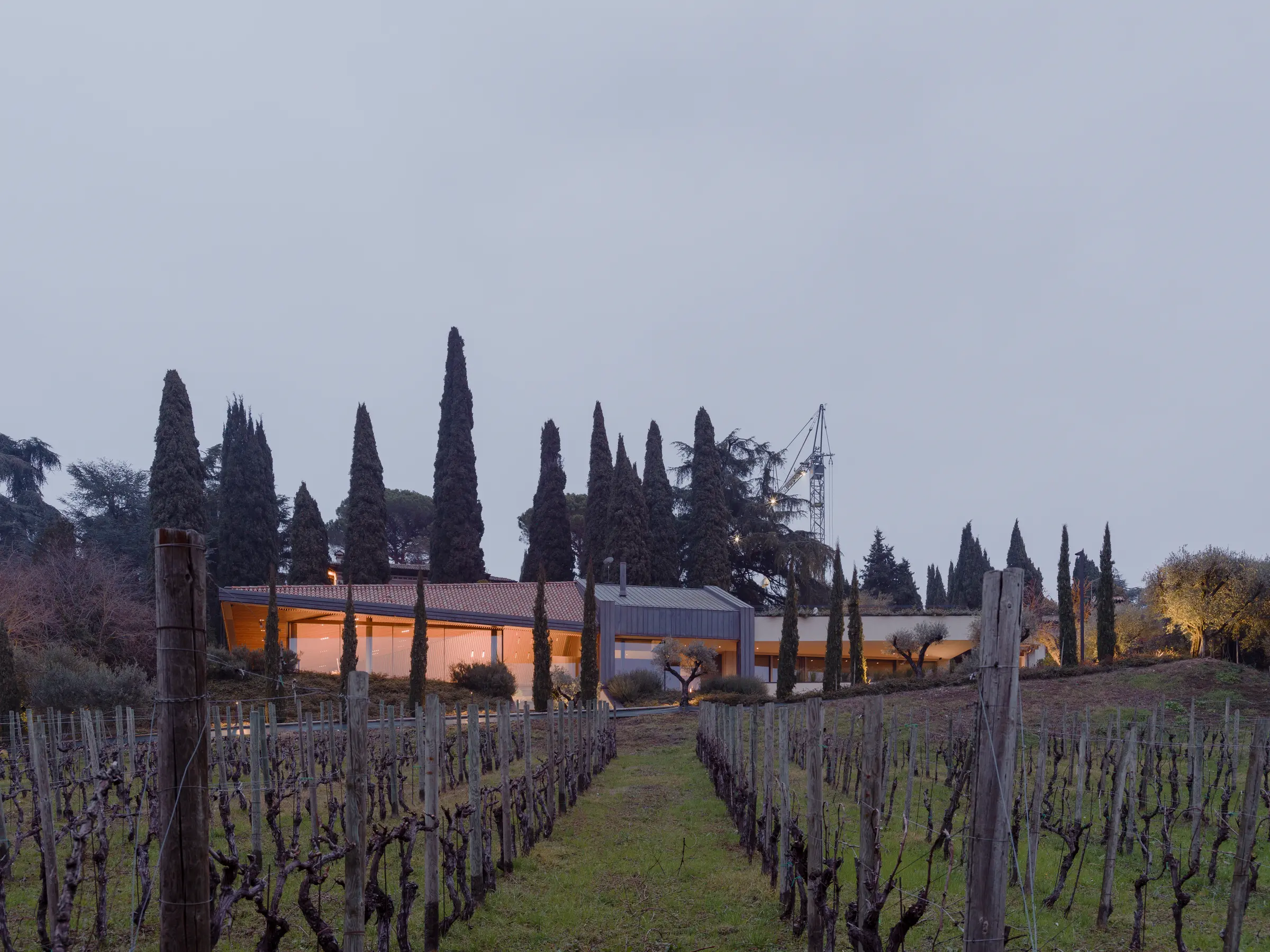
Although part of the property, including the farm building and the vineyard, was sold due to family disputes, the original core of the late 19th-century dwelling was left intact. The new owner opted to enhance the neighbouring ‘historic’ building by restoring its ‘typological uniqueness’. The proprietor also constructed a new building to fill in the hillside gap which had originally been dug for parking spaces for the agritourism business. In light of the environment being weighed down by numerous landscape constraints, the Architectural Board followed the architects’ design, a step at a time. Indeed, the design posed a complex challenge in dealing with a highly protected environment, as it sought to forge a harmonious relationship with the landscape.
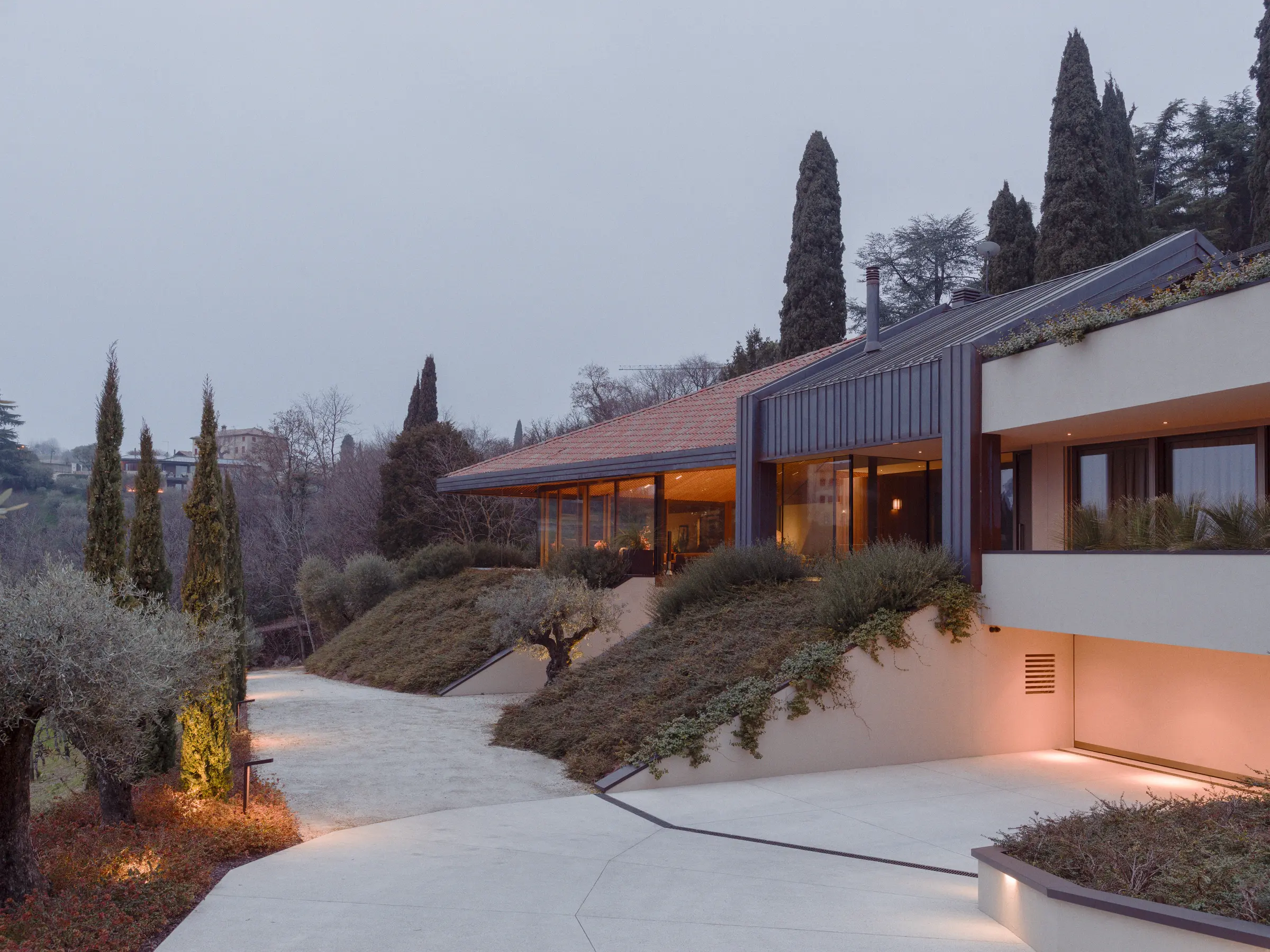
The design set out to split the building into three parts, an idea well justified by the southerly tripartite elevation, and reinforced in material and colour terms. The first of these parts is the eastern section, located above the entrance to the underground garage, covered by the hillside embankment and featuring coarsely plastered walls. The second, central part contains vertical/horizontal connecting elements clad entirely in copper. Finally, there is the western part, with its three-pitch, red-tile roof and window-front walls facing out to the valley.
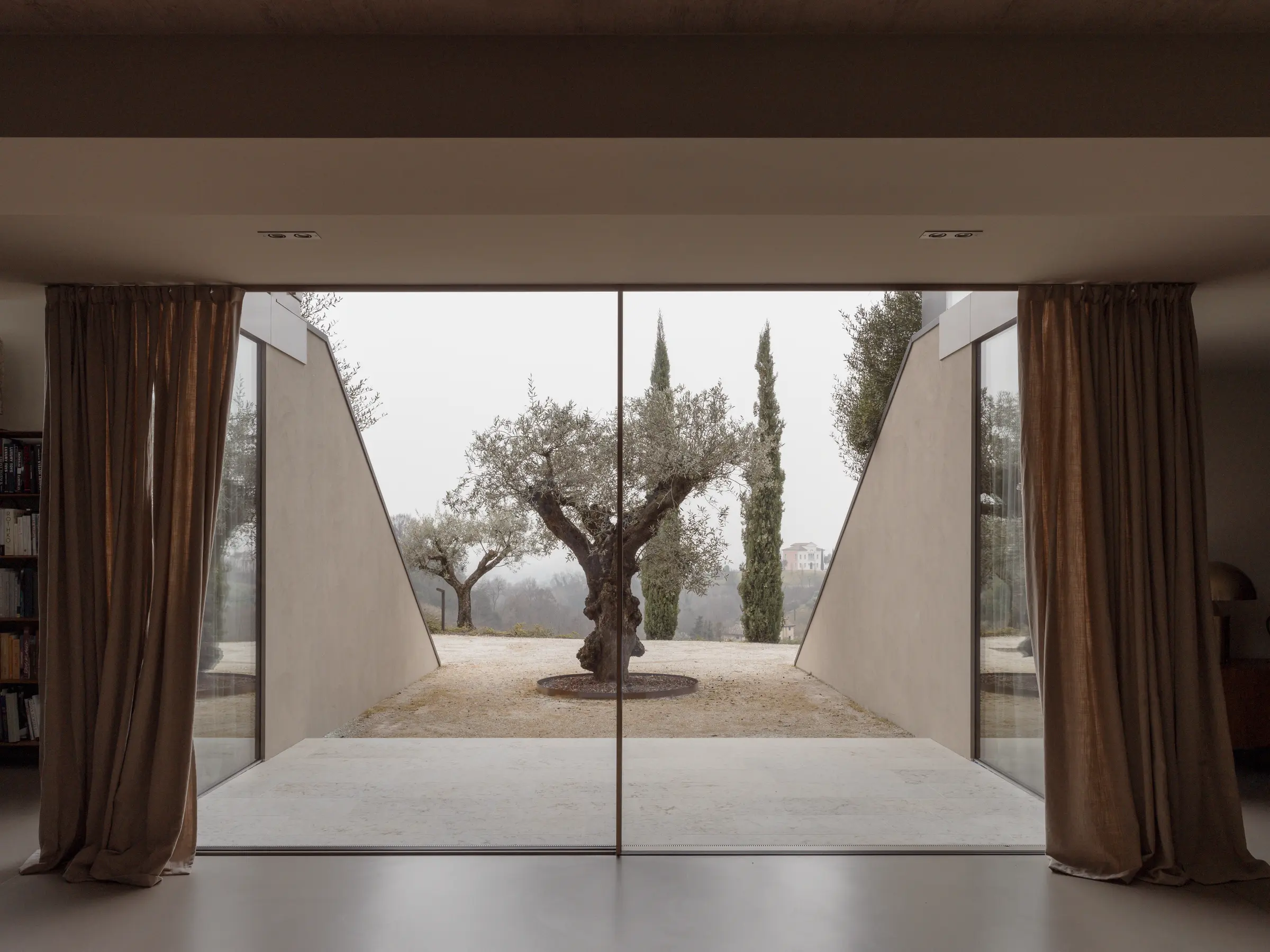
The architectural volume appears to be semi-grafted onto the original hillside slope, resulting in almost the entire north façade being close to it, until it is covered by the eastern-lying ground. The original, now-restored, contour lines proceed to depart from the portico in the west area to reconnect southwards, at the vineyard’s level. This is achieved with a variable slope created by the cambered escarpment that borders it. In this way, the building is set into the hillside, with the forms of the tripartite roof accompanying the sloped terrain in terms of both layout and elevation.

Throughout the project, there was an attempt in both the indoor and outdoor areas to strike a balance between transparencies and volumes that would be able to enhance the environment into which the building has been inserted. Right from the moment we enter, continuous surprises await us in the form of varying spaces, surfaces and heights, as well as alternating solids and voids – the house shows itself to be at once complex and pared-down. With the rooms free of any unnecessary elements, light floods the surfaces with natural tones, bursting through the large windows along the perimeter towards the valley.
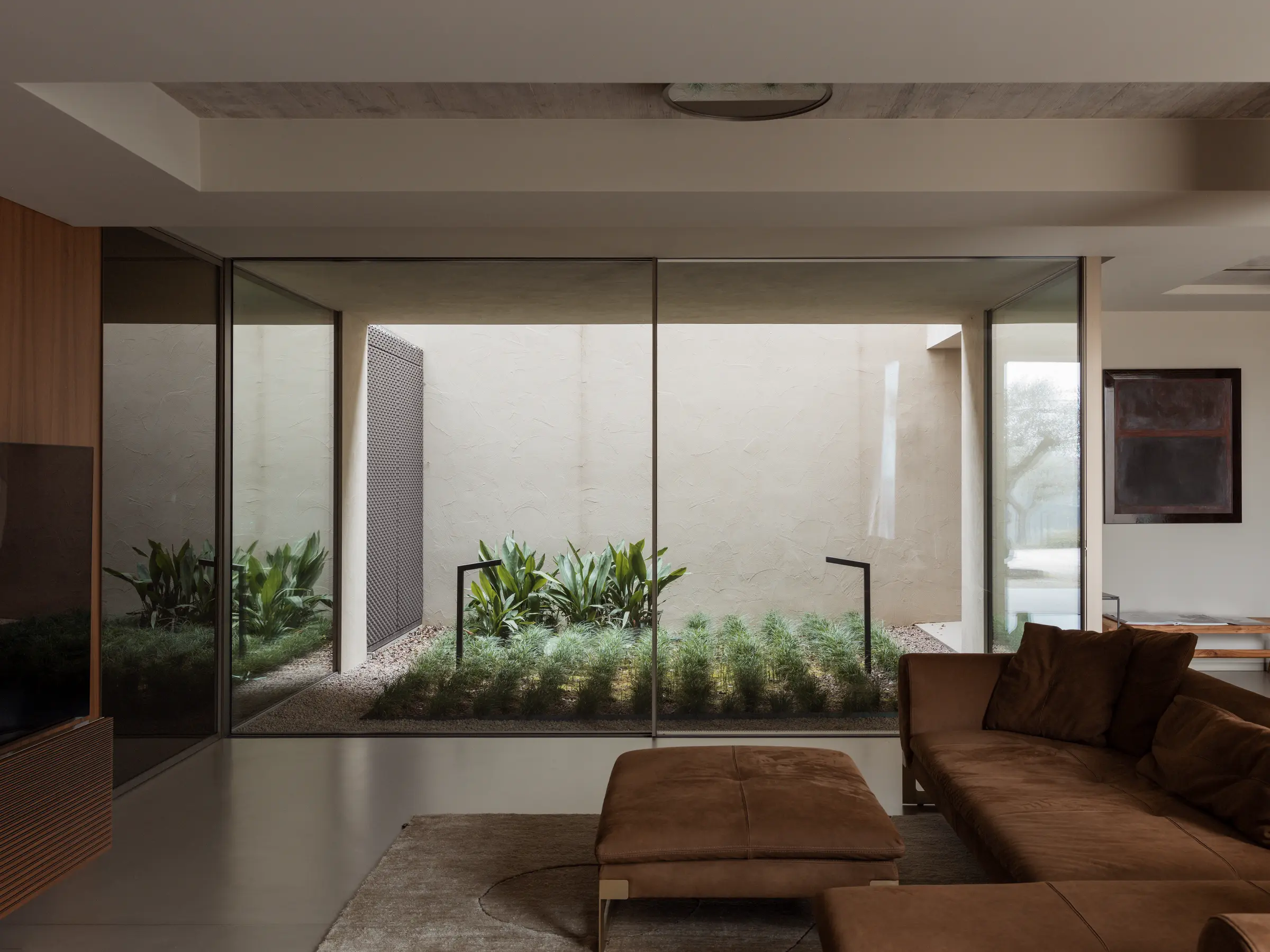
The relationship with the outside landscape is the crown jewel of this design. The fully transparent quality of the perimeter glass curtains allows us to directly experience the lush nature that surrounds the building, creating a stunning backdrop that shifts from one hour to the next. The building basks in sunlight from the early hours of the morning until the sun sets behind the hills. Inside, the material surfaces absorb the outdoor brightness to imbue the rooms with a cosy, welcoming atmosphere.

The building’s various spaces are spread out across three levels: the ground floor with its living and reception area, the basement with its large cellar at vineyard level, and the first floor/attic, which enjoys direct access to the rooftop garden that forms part of the building’s roof. In the spacious basement cellar, the direct southern exit at the same level as the existing vineyard connects the inside and the outside, both visually and regarding the more strictly agricultural operations associated with growing, maintaining, harvesting and treating the glera grapes produced on-site. At the same level, an underground garden on the north front acts as a “well of light” for rooms that, being set back from the hillside, would otherwise be in the dark.
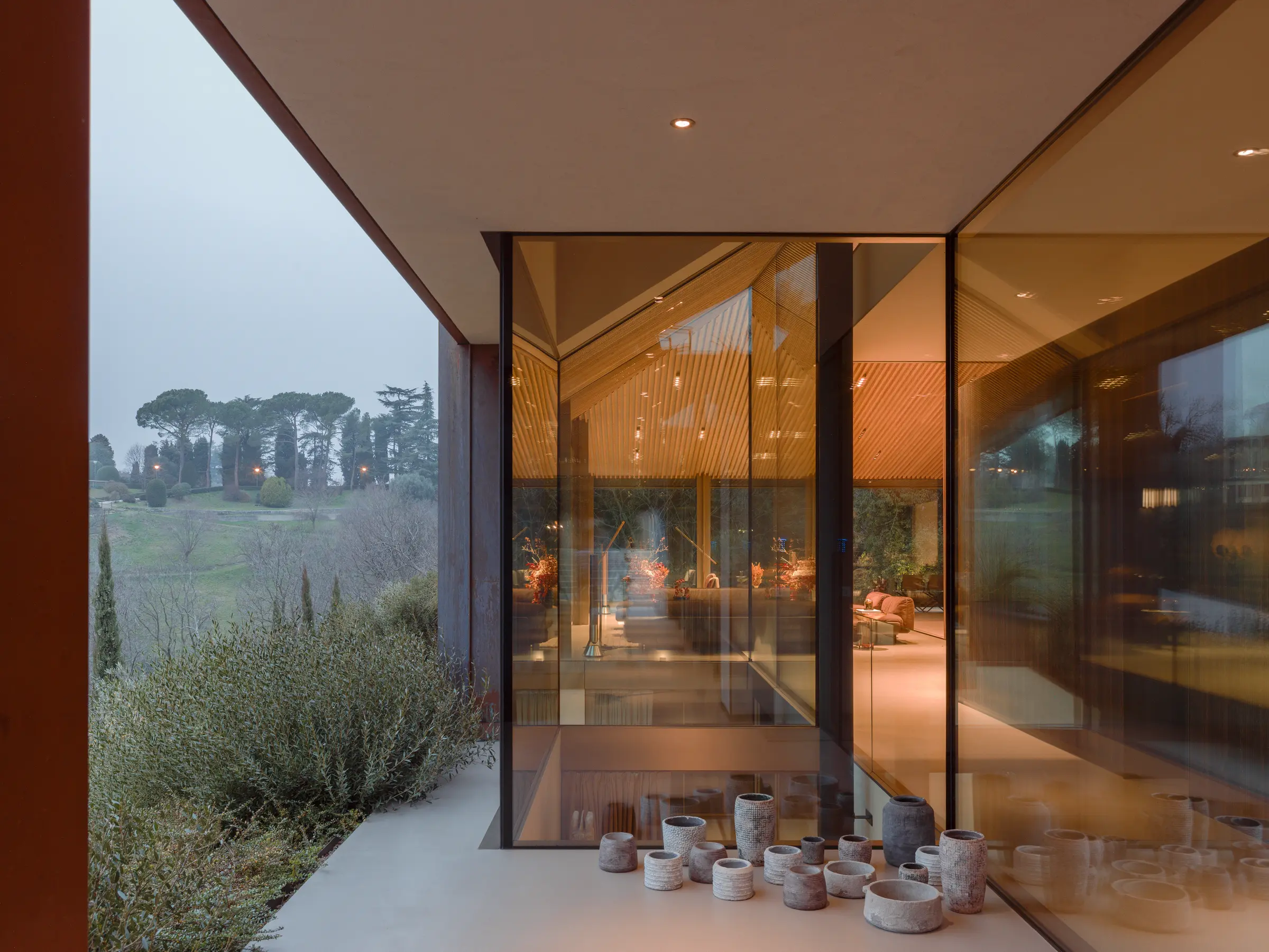
On the first floor/attic, the rooftop garden forges a direct link with the restoration of the pre-existing hillside. Meanwhile, three circular opening skylights ensure that the spaces below are correctly lighted and ventilated. On the ground floor, large windows around the perimeter guarantee that there is a close connection with the outside landscape, while their pared-back profiles ensure maximum transparency and permeability of the building’s interior spaces. Large and fluid spaces accommodate double interior and exterior heights which adapt to the hilly terrain. Every piece of furniture was made to a design, with research into materials giving as many personalised touches to the rooms as possible.
